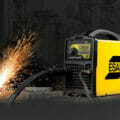~ Three ways parts suppliers will benefit from greater data ~
According to Arthur Conan Doyle, the literary genius behind detective Sherlock Holmes, ‘‘it is a capital mistake to theorize before one has data.’’ The ability to gather and interpret data underpins the benefits of predictive maintenance, promising cost savings and efficiency gains. As predictive maintenance looks set to become an industry standard, Roger Brereton of steering system manufacturer Pailton Engineering explains why parts suppliers are welcoming this development.
Predictive maintenance technologies harness the data, both real time and historic, gathered by vehicles to more accurately predict when a fault or defect is likely to occur. This means that the scheduled maintenance work carried out under interval-based programs is more efficient, as the technician has a much clearer idea of the health of that specific vehicle, before it even enters the workshop.
More importantly, however, predictive maintenance promises to cut out the number of breakdowns and unscheduled maintenance events, by accurately predicting when maintenance action or replacement parts are required to prevent an impending problem.
The principle has been around for a long time, but it is only more recently that it is becoming commercially viable, thanks to artificial intelligence (AI) and machine learning algorithms. It will soon become an industry standard, and its advocates are confident it will deliver significant costs savings to the industry.
As a parts supplier, we are delighted to see this technology making real inroads in the commercial vehicle sector. Here are three key reasons we love predictive maintenance:
Efficient inventory management
Traditionally, when a vehicle entered a workshop, it would be difficult for the technician to know in advance exactly what work needed doing, how long it might take and what parts would be required. One of the key benefits of digitalization and connectivity is that vehicles are no longer entering the workshop blind.
With predictive maintenance, the technician will already know in advance things like the mileage of the vehicle, without having to carry out the traditional manual checks. This means they can order parts ahead of time if necessary, but it also avoids over stocking of components as well.
More sophisticated software programs are capable of spotting patterns in historic data to anticipate when a replacement part or critical component will need replacing, based on the specific needs of that vehicle rather than generic one-size-fits-all guidelines. Again, this means critical components will be available when ready, but it also reduces the risk of over-stocking too. For those that are feeling confident in embracing the new technology, you can even introduce automation of parts replenishment, where the software automatically orders replacement parts without any human involvement.
Digital detectives
With the digitalization of a vehicle’s maintenance history, engineers can access this more easily and reveal recurring defects. Furthermore, when machine learning algorithms are set to work on historic data, they can spot patterns that indicate where certain parts or components are creating repeated problems.
Let’s say a steering column universal joint is showing signs of wear quicker than expected. Having a digital record of this wear and deterioration allows engineers to easily discover the source of a potential steering problem and resolve the issue by switching to high quality components.
By gathering historic data related to different fault codes, the AI used in predictive maintenance technologies can also spot patterns that reveal evidence of low quality or defective parts leading to increased unscheduled maintenance events.
Whole life costs
A long running debate in the sector stems from the competing claims of those who sell original equipment (OE) parts and those who sell cheaper, aftermarket versions. Any original equipment manufacturer will tell you that while you might pay more up front for their parts, you will save money on whole life costs. The higher quality OE parts will last longer and ensure the vehicle performs better, whereas aftermarket parts manufactured by a third-party company cannot guarantee the same level of quality and functionality.
As an OE parts manufacturer ourselves, we have long maintained this position and the benefits of OE parts. But how do we prove it? How do customers know it is worth paying extra when, as Doyle has told us, we should not theorize without the data! If predictive maintenance technology were to become an industry standard, it would open a new chapter in this debate. Here, those companies who had invested in predictive maintenance alongside OE parts would be able to see a return on investment and most importantly, they would have the data to prove it.
Pailton Engineering is an original equipment manufacturer that supplies bespoke steering components for heavy vehicles. To view their full product range, visit pailton.com





